Soviet Empire
The informal term "Soviet Empire" is used by critics of the Soviet Union and Russian nationalists[1] to refer to that country's perceived imperialist foreign policy during the Cold War. The nations said to be part of the "Soviet Empire" were officially independent countries with separate governments that set their own policies (to a greater or lesser extent, depending on the country), but those policies had to remain within certain limits decided by the Soviet Union and enforced by threat of intervention by the Warsaw Pact (Hungary 1956, Czechoslovakia 1968, Poland 1980). Countries in this situation are often called satellite states.
Characteristics
Though the Soviet Union was not ruled by an emperor and declared itself anti-imperialist and a people's democracy, critics[2][3] argue that it exhibited tendencies common to historic empires. Some scholars hold that the Soviet Union was a hybrid entity containing elements common to both multinational empires and nation states.[2] It has also been argued that the USSR practiced colonialism as did other imperial powers,[3] Maoists argued that the Soviet Union had itself become an imperialist power while maintaining a socialist façade.
The other dimension of "Soviet imperialism" is cultural imperialism. The policy of Soviet cultural imperialism implied the Sovietization of culture and education at the expense of local traditions.[4]
Overall, the Soviet Empire was a political-military construct. Its hub, Russia, was not a colonial state in the classical sense of holding colonies and exploiting their natural resources. The economies of various parts were both diversified and interrelated, frequently specialising in one type of production and fully dependent on others in both the supply and demand chains. For example, while Uzbek SSR may have been viewed as a typical example of a monoculture country producing cotton, its capital, Tashkent has become a major industrial centre, and Russia itself was a major supplier of raw materials for all its "colonies". In cases where political control wasn't yet firmly established, the satellite states were economically exploited at full scale, as it happened in post-war Poland and Baltic states.
The penetration of the Soviet influence into the "socialist-leaning countries" was also of the political and ideological kind: rather than getting hold on their economic riches, the Soviet Union pumped enormous amounts of "international assistance" into them in order to secure influence,[5] eventually to the detriment of its own economy. After the dissolution of the Soviet Union, when Russia declared itself successor, it recognized $103 billion of Soviet foreign debt, while claiming $140 billion of Soviet assets abroad.[5]
Part of contemporary Russian nationalism considers the USSR to be a continuation of the Russian Empire and thus considers geographical and political expansion of the Soviet Union as continuation and further achievement of the Russian ethnos.[1][6][7]
Influence
The Soviet Empire is considered to have included the following:[8][9]
 The Soviet Union, its allies, and its satellite states
The Soviet Union, its allies, and its satellite states

These countries were the closest allies of the Soviet Union. They were members of the Comecon, a Soviet-led economic community founded in 1949. In addition, the ones located in Eastern Europe were also members of the Warsaw Pact. They were sometimes called the Eastern bloc in English and were widely viewed as Soviet satellite states.
.svg.png) Bulgaria
Bulgaria Cuba
Cuba Czechoslovakia
Czechoslovakia East Germany
East Germany Hungary
Hungary.svg.png) Mongolia
Mongolia Poland
Poland.svg.png) Romania
Romania Yugoslav Partisans/Socialist Federal Republic of Yugoslavia (Ended affiliation with USSR in 1948 due to Tito-Stalin Split)
Yugoslav Partisans/Socialist Federal Republic of Yugoslavia (Ended affiliation with USSR in 1948 due to Tito-Stalin Split) North Vietnam/Vietnam (after 1976)
North Vietnam/Vietnam (after 1976).svg.png) Albania (ended participation in Comecon after 1961 due to Sino-Soviet Split)
Albania (ended participation in Comecon after 1961 due to Sino-Soviet Split) North Korea from 1945 to 1950. After Chinese intervention in the Korean War in 1950, North Korea remained a Soviet ally,[10] but used the Juche ideology to balance Chinese and Soviet influence. Following the withdrawal of Chinese troops in 1958, North Korea pursued a highly isolationist foreign policy. It did not join the Comecon or any other international organization of communist states.
North Korea from 1945 to 1950. After Chinese intervention in the Korean War in 1950, North Korea remained a Soviet ally,[10] but used the Juche ideology to balance Chinese and Soviet influence. Following the withdrawal of Chinese troops in 1958, North Korea pursued a highly isolationist foreign policy. It did not join the Comecon or any other international organization of communist states.
Soviet involvement in the Third World
Some countries in the Third World had pro-Soviet governments during the Cold War. In the political terminology of the Soviet Union, these were "countries moving along the socialist road of development", as opposed to the more advanced "countries of developed socialism", which were mostly located in Eastern Europe, but also included Vietnam and Cuba.
They received some aid, either military or economic, from the Soviet Union, and were influenced by it to varying degrees. Sometimes, their support for the Soviet Union eventually stopped, for various reasons; in some cases the pro-Soviet government lost power, while in other cases the same government remained in power but ended its alliance with the Soviet Union.
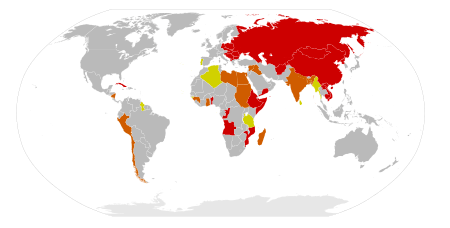
Some of these countries were not communist states. They are marked in italic.
-
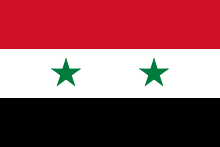 Egypt (1954–1973)
Egypt (1954–1973) -
 Syria (1955–1991)
Syria (1955–1991) -
%3B_Flag_of_Syria_(1963-1972).svg.png) Iraq (1958–1963, 1968–1991)
Iraq (1958–1963, 1968–1991) -
 Guinea (1960–1978)
Guinea (1960–1978) -
 Mali (1960–1968)
Mali (1960–1968) -
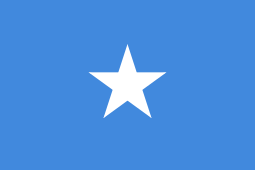 Somali Democratic Republic (1969–1977); in 1977, at the outbreak of the Somali invasion of Ethiopia, the Soviet Union ceased to support Somalia, with the corresponding change in rhetoric; Somalia broke diplomatic relations with the USSR, and the United States adopted Somalia as a Cold War ally.[11]
Somali Democratic Republic (1969–1977); in 1977, at the outbreak of the Somali invasion of Ethiopia, the Soviet Union ceased to support Somalia, with the corresponding change in rhetoric; Somalia broke diplomatic relations with the USSR, and the United States adopted Somalia as a Cold War ally.[11] -
.gif) Algeria (1962–1991)
Algeria (1962–1991) -
.svg.png) Ghana (1964–1966)
Ghana (1964–1966) -
 Peru (1968–1975)
Peru (1968–1975) -
 Sudan (1968–1972)
Sudan (1968–1972) -
 Equatorial Guinea (1968–1979)
Equatorial Guinea (1968–1979) -
.svg.png) Libya (1969–1991)
Libya (1969–1991) -
 People's Republic of the Congo (1963–1991)
People's Republic of the Congo (1963–1991) -
 Chile (1970–1973)
Chile (1970–1973) -
 Cape Verde (1975–1991)
Cape Verde (1975–1991) -
 South Yemen (1967–1990)
South Yemen (1967–1990) -
 Uganda (1969-1971)
Uganda (1969-1971) -
 Indonesia (1959–1965)
Indonesia (1959–1965) -
 India (1971–1989)
India (1971–1989) -
 People's Republic of Bangladesh (1971–1975)
People's Republic of Bangladesh (1971–1975) -
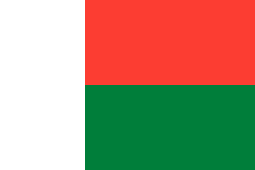 Democratic Republic of Madagascar (1972–1991)
Democratic Republic of Madagascar (1972–1991) -
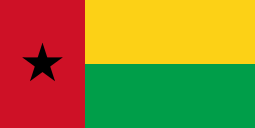 Guinea Bissau (1973–1991)
Guinea Bissau (1973–1991) -
.svg.png) Derg (1974–1987)/
Derg (1974–1987)/.svg.png) People's Democratic Republic of Ethiopia (1987–1991)
People's Democratic Republic of Ethiopia (1987–1991) -
 Lao People's Democratic Republic (1975–1991)
Lao People's Democratic Republic (1975–1991) -
.svg.png) People's Republic of Benin (1975–1990)
People's Republic of Benin (1975–1990) -
.svg.png) People's Republic of Mozambique (1975–1990)
People's Republic of Mozambique (1975–1990) -
 People's Republic of Angola (1975–1991)
People's Republic of Angola (1975–1991) -
.svg.png) Seychelles (1977–1991)
Seychelles (1977–1991) -
.svg.png) Democratic Republic of Afghanistan (1978–1991)
Democratic Republic of Afghanistan (1978–1991) -
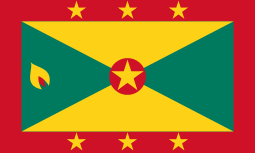 People's Revolutionary Government (Grenada) (1979–1983)
People's Revolutionary Government (Grenada) (1979–1983) -
 Nicaragua (1979–1990)
Nicaragua (1979–1990) -
 People's Republic of Kampuchea (1979–1989)
People's Republic of Kampuchea (1979–1989) -
 Burkina Faso (1983-1987)
Burkina Faso (1983-1987)
Communist states opposed to the Soviet Union

Some communist states were openly opposed to the Soviet Union and many of its policies. Though their forms of government may have been similar, they were completely sovereign from the USSR and held only formal ties. Relations were often tense, sometimes even to the point of armed conflict.
 Yugoslavia (Informbiro 1948)
Yugoslavia (Informbiro 1948).svg.png) Albania (following the Sino-Soviet split)
Albania (following the Sino-Soviet split) China (following the Sino-Soviet split)
China (following the Sino-Soviet split) Democratic Kampuchea (1975–1979, due to the Cambodian-Vietnamese War)
Democratic Kampuchea (1975–1979, due to the Cambodian-Vietnamese War) Somali Democratic Republic (1977–1991, due to the Ogaden War)
Somali Democratic Republic (1977–1991, due to the Ogaden War)
See also

- American imperialism
- Cominform
- Communist state
- Evil Empire
- Greater Germanic Reich
- Imperialism
- Index of Soviet Union-related articles
- Red Empire
- Sino-Soviet split
- Western betrayal
- Captive Nations
References
- 1 2 "The borders of the Russian World extend significantly farther than borders of Russian Federation. I fulfill a historic mission in the name of Russian nation, super-ethnos, unified by the Orthodox christianity. Just as in Caucasus, I'm fighting in Ukraine against separatism – this time not Chechen, but Ukrainian one. Because there is Russia, Great Russia, Russian Empire. And now Ukrainian separatists in Kiev are fighting against Russian Empire.", Alexander Borodai, in: Skobov, Aleksandr (21 July 2014). "Реконструкция ада" [Reconstruction of Hell]. Grani.ru. Archived from the original on 28 July 2014. Retrieved 21 July 2014.
- 1 2 Beissinger, Mark R. 2006 "Soviet Empire as 'Family Resemblance,'" Slavic Review, 65 (2) 294-303; Dave, Bhavna. 2007 Kazakhstan: Ethnicity, language and power. Abingdon, New York: Routledge.
- 1 2 Caroe, O. (1953). "Soviet Colonialism in Central Asia". Foreign Affairs. 32 (1): 135–144. JSTOR 20031013.
- ↑ Natalia Tsvetkova. Failure of American and Soviet Cultural Imperialism in German Universities, 1945-1990. Boston, Leiden: Brill, 2013
- 1 2 Dmitri Trenin, “Post-Imperium: A Eurasian Story,” Carnegie Endowment for International Peace, 2011. p. 144-145
- ↑ Paul Goble (2014-11-11). "Russians Dream of ‘Soviet Empire Without Communists,’ Commentators Say". Interpreter Magazine. Retrieved 2014-11-11.
- ↑ Alexander Dugin, Foundations of Geopolitics
- ↑ Cornis-Pope, Marcel (2004). History of the Literary Cultures of East-Central Europe: Junctures and disjunctures in the 19th and 20th centuries. John Benjamins. p. 29. ISBN 978-90-272-3452-0.
- ↑ Dawson, Andrew H. (1986). Planning in Eastern Europe. Routledge. p. 295. ISBN 978-0-7099-0863-0.
- ↑ Shin, Gi-Wook (2006). Ethnic nationalism in Korea: genealogy, politics, and legacy. Stanford University Press. p. 94. ISBN 978-0-8047-5408-8.
- ↑ Crockatt, Richard, The Fifty Years War: The United States and the Soviet Union in World Politics. London & New York, NY: Routledge. 1995, ISBN 978-0-415-10471-5